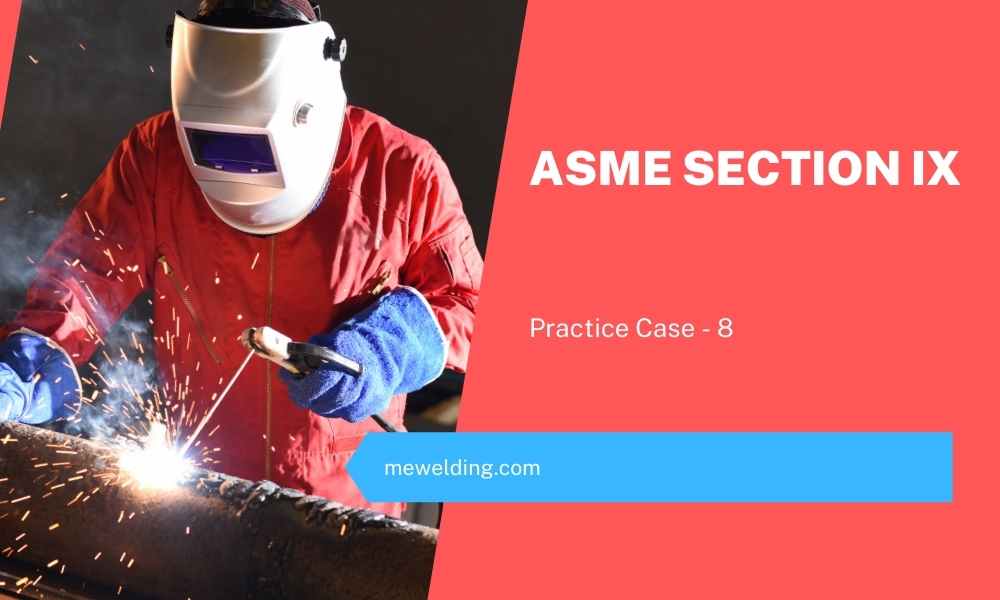In this article, we shall discuss on an example having a PQR qualified with a PWHT (post weld heat treatment). What must be kept in mind while applying PWHT as an essential variable as well as supplementary essential variable? A question asked in an Interpretation has been used to explain the point.

Consider the following question asked in Interpretation IX-07-06.
“Background: A weld test coupon for a PQR was welded to itself using P-No. 1, Group 2 plate material and postweld heat treated at 1110°F to 1130° F (600°C to 610°C) for 10 hr. The PQR documents all supplementary essential variable notch toughness requirements. Notch toughness is required and all qualification ranges are supported by the PQR for production welds.
Question: Will this PQR support a WPS that specifies a PWHT temperature range below the lower transformation temperature, provided the time at temperature does not exceed 12.5 hr?”
It has been specified that notch toughness is required for production welds. So, all supplementary essential variables become additional essential variables.
For above question, QW 407.1 which is an essential variable, and QW 407.2 which is a supplementary essential variable, are pertinent for discussion.
As per QW 407.1, “a separate procedure qualification is required” for “PWHT below lower transformation temperature.”
This means that if the production job is to undergo a PWHT at any temperature below lower transformation temperature (this temperature is generally quoted at 723°C for carbon steels and carbon-molybdenum steels), the procedure qualification must have been qualified with a PWHT at a temperature below lower transformation temperature.
The PQR cited in the question meets this requirement.
As per QW 407.2, “The procedure qualification test shall be subjected to PWHT essentially equivalent to that encountered in the fabrication of production welds, including at least 80% of the aggregate times at temperature(s)”.
The production weld described in the question is to undergo a PWHT of 12.5 hours. The PWHT time adopted in procedure qualification is 10 hours, which is 80% of that required in production weld. Hence, the condition of QW 407.2 is satisfied.
The PQR cited in the question meets this requirement too.
Hence, the PQR in question is good enough to support the WPS described therein. The answer given in the Interpretation is also, therefore, “yes”.
A bit of caution is required to be exercised in cases such as this, in interpreting the QW 407.1 and QW 407.2.
As per QW 407.1, if a procedure qualification has been done with a PWHT at any temperature below lower transformation temperature, the PQR can be support a WPS with a PWHT at any other temperature below lower transformation temperature.
For example, a PQR was qualified with a PWHT at 600°C. This PQR can be used to support a WPS with at 550°C, and another WPS with a PWHT at 650°C too. This is all fine and dandy if only QW 407.1 is being considered (for applications not requiring toughness).
However, when toughness is a requirement, QW 407.2 (a supplementary essential variable) has to be considered too. QW 407.2 says that the procedure qualification must have been qualified with a PWHT essentially equivalent to the PWHT that would be seen in production welds.
This means that if the production weld has to be heat treated at 550°C, the procedure qualification test coupon should have been heat treated at 550°C too. And if the production weld has to be heat treated at 650°C, the procedure qualification test coupon should have been heat treated at 650°C too. Likewise for 600°C.
See More:
